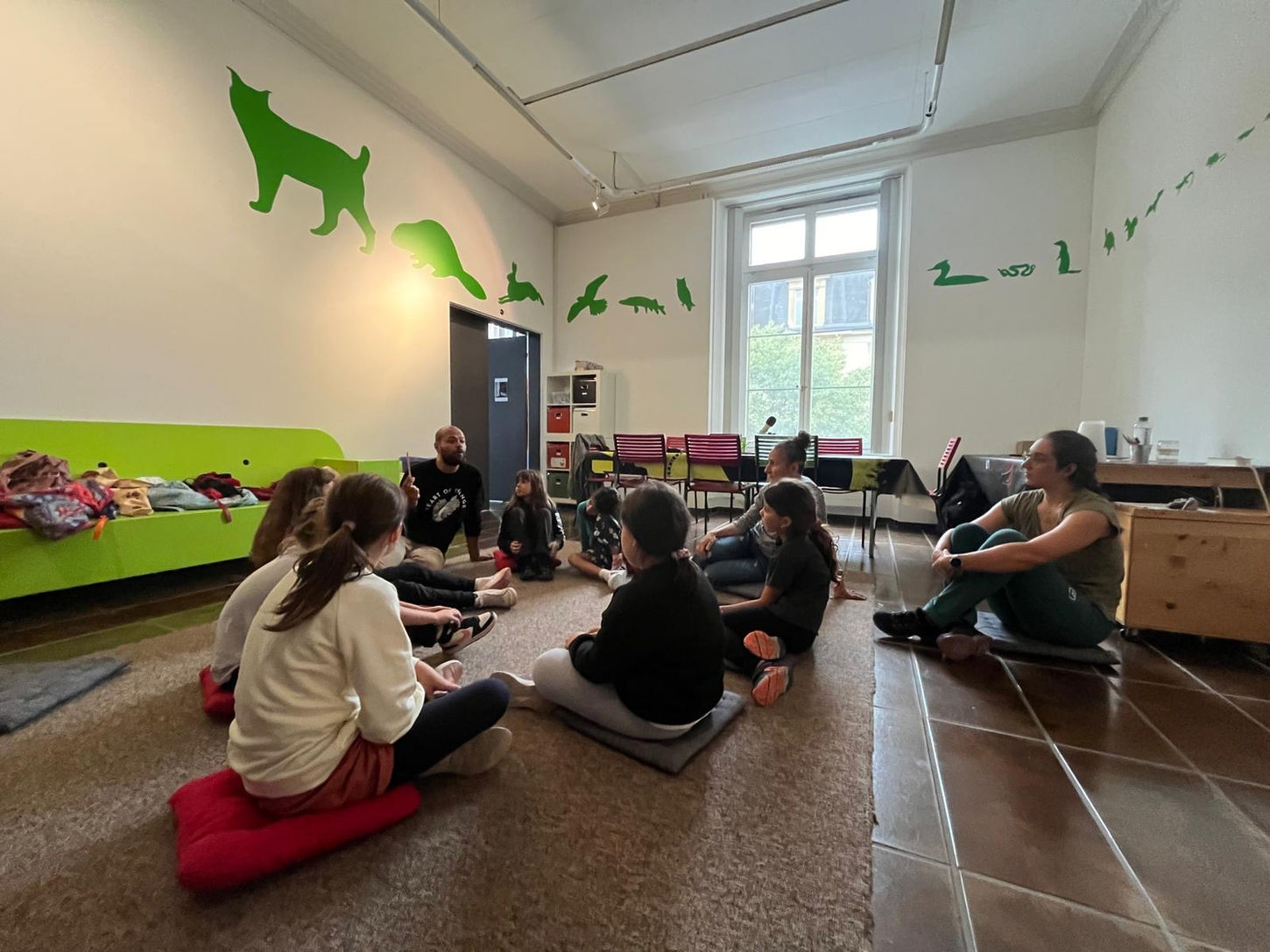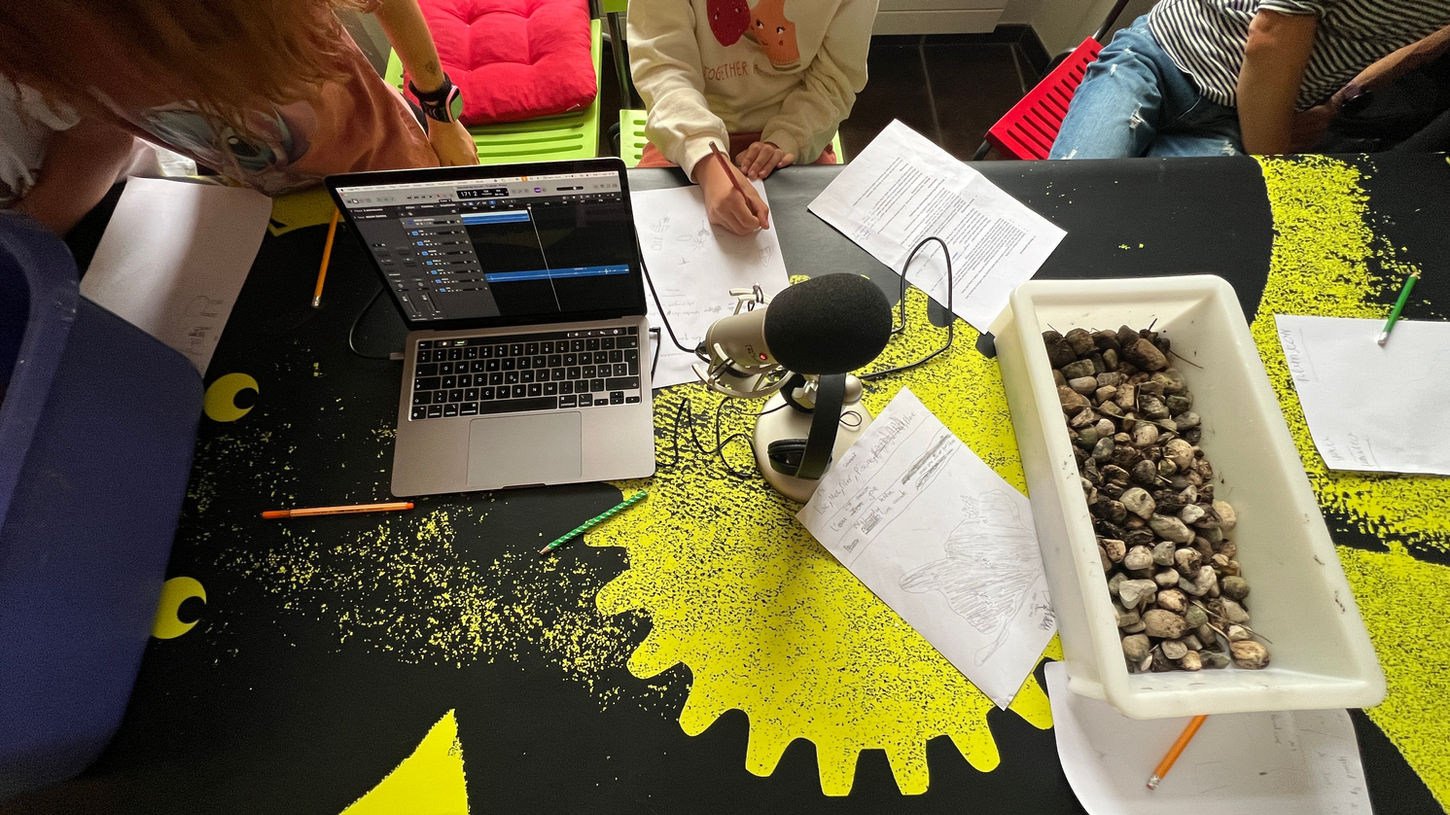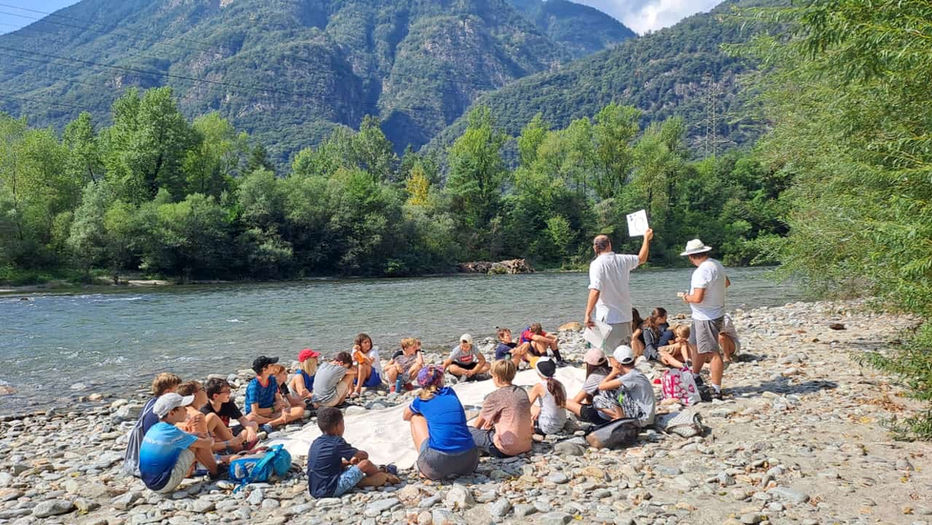
Orchestre du Lac
"Orchestre du Lac" is a creation in which music flows like water, without barriers or preconditions. It is an open Orchestre where each person becomes an instrument because we are vibration and music, because we are water. This artwork, created on the shores of Lake Neuchâtel with the support of the Library for a Happy Future and the Natural History Museum of Neuchâtel, invites everyone to be part of a living symphony, based on the feelthinking (“sentipensar” Indigenous and peasant concept from Colombia). Here, the sensory and the rational intertwine in harmony to offer an unprecedented musical experience. This project was born out of a desire to explore the local knowledge, traditions, and stories of the Neuchâtel region about water and good living (Buen vivir). The "Orchestre du Lac" is made up of children whose voices create the rhythms, beats and whispers that give life to this artistic work. It is based on inclusion and the fact that we are all water, life, and music. No musical training was required, just an openness to feel, think and express.
The children's voices, amplified by the echo of the lake, mingle with the natural sounds of the wind, the splash of the water, and the murmur of the stones, creating an atmosphere of total immersion. In this way, the artwork becomes a reflection of good living (Buen vivir), where harmony between humans and their environment is the path to a full life in biocultural peace.
From 3 October 2024 to 1 December 2024, Orchestre du Lac will be performed at the Natural History Museum in Neuchâtel. "Orchestre du Lac" is an invitation to rethink music, to feel it from the heart and our local traditions, to be part of a collective sonic fabric that resonates with life, community, and water.

Cantos al Agua y otros Seres
«Cantos al Agua y otros Seres» is a celebration of the union between traditional knowledge, the mountains, the rivers, oceans, seas, animals, the invisible beings, the place, and its people, in an act mediated by love, integration by the symbolic, sonorous and expansive power of the Kuisi (Colombian Gaita in its colonial name). The Kuisi comes from the Sierra Nevada de Santa Marta, where it has been played since ancient times by aboriginal peoples as a ritual to celebrate, sow, fertilize, and heal nature. The artist has been integrating this instrument and its spirituality into his art and practice for many years.
«Sonidos de la Tierra, Agua y Cantos» is a ritual performance that takes place in nature and is brought into the room via video to spread the message of the Kuisi and its Territory, bringing healing to the artist, beings, and the local territory. The work aims to create a loving and intimate cultural and spiritual bridge between the mountains, its trails, and waters, re-signifying the space to honor biodiversity and life.

Collage de Historias
Collage de Historias invites us to explore and rediscover our Social Technologies for Feel-Thinking. Feel-Thinking is a process that leads us to reconnect with collective ways of feeling, being, creating, and relating to others and nature. Through this practice, we foster dialogues with ourselves, and between different cultures-generations, and contribute to the protection of traditions, cosmovisions, and diverse social and territory. The methodology is based on the concept of One Health, which adopts a holistic perspective to address and create solutions within the multiple contexts in which human beings interact with other Ecosystems and Bio-Cultures.
Feeling-Thinking is the process by which we bring thinking and feeling together in an ongoing dialogue. It involves learning to feel and think together with others, becoming subjects of praxis. This concept, which comes from the words of the fishermen of San Benito Abad (Sucre), collected by the sociologist Orlando Fals Borda, teaches us to act from the heart without forgetting the head, integrating both dimensions to generate empathetic decisions and coherent actions.

Community Pedagogies
Community Pedagogies is a live installation centered on listening, narration, rituals, and social experiences such as cooking. This immersion appeals to the construction of communities and brings to the salon the ancestral-popular philosophies, oral literatures, community voices, and processes of Resistance and Resilience creating an interaction of experiences framing the politics of the concept of Buen Vivir (Good Living).
This cultural erasure during the colonial era and continued as a neo-colonial practice still attempts to silence these unique ways of being, thinking, and doing, which is the focus of this space, which raises questions for its audience by proposing a dialogue about territory, body, tradition and a new global anthropogeography between migration, change and community.




























































